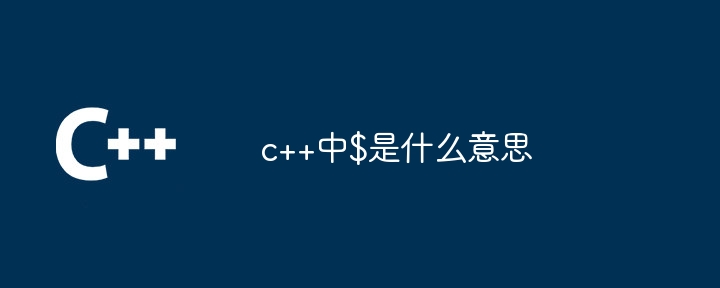
In C, the $ symbol is used to: Stringize macros: Convert macro parameters into string form, the format is #define STR(x) #xSTR(Hello), the result is "Hello" string constant. Exception handling: The current exception object is represented in the catch block, in the format of catch (std::exception& e), and e.$what() is used to return exception description information.

In C, the $ symbol is mainly used in the following two situations:
$ symbol is used in stringification macros to convert macro parameters into string form. Macro parameters are enclosed in parentheses and placed after the $ symbol. For example:
#define STR(x) #x STR(Hello) // 转换为 "Hello" 字符串常量
$ symbols are used to catch and handle exceptions. In a catch block, the $ symbol represents the exception object currently being handled. For example:
try {
// ...
} catch (std::exception& e) {
std::cout << "An exception occurred: " << e.$what() << std::endl;
}$what() The method returns the exception object describing the error message.
The above is the detailed content of What does $ mean in c++. For more information, please follow other related articles on the PHP Chinese website!
 Representation method of string constant
Representation method of string constant
 What are the differences between c++ and c language
What are the differences between c++ and c language
 Recommended learning order for c++ and python
Recommended learning order for c++ and python
 Cost-effectiveness analysis of learning python and c++
Cost-effectiveness analysis of learning python and c++
 Is c language the same as c++?
Is c language the same as c++?
 Which is better to learn first, c language or c++?
Which is better to learn first, c language or c++?
 The difference and connection between c language and c++
The difference and connection between c language and c++
 C++ software Chinese change tutorial
C++ software Chinese change tutorial




